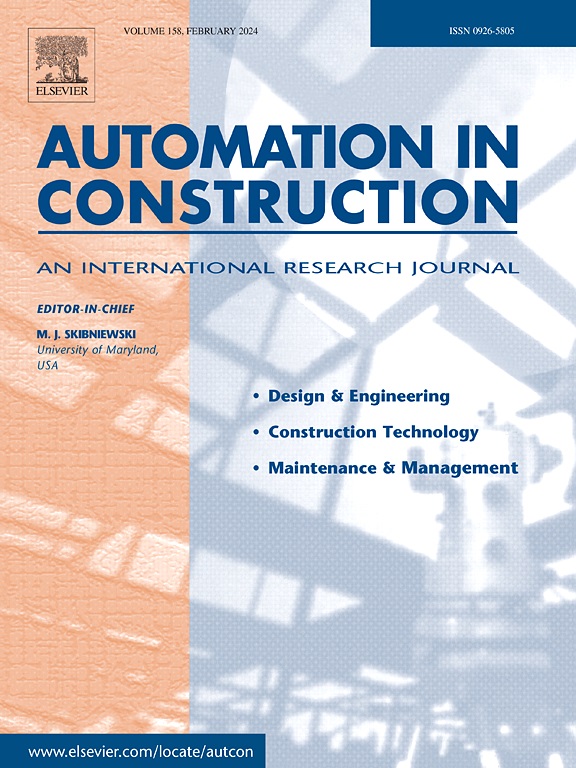基于深度学习的MEP组件点云补全
IF 9.6
1区 工程技术
Q1 CONSTRUCTION & BUILDING TECHNOLOGY
引用次数: 0
摘要
点云越来越多地用于设施的建成模型重建。然而,机械、电气和管道(MEP)系统的点云经常经历广泛的遮挡,这严重影响了模型重建的性能。为了解决这一挑战,本文探索了基于深度学习(DL)的点云补全算法来补全被遮挡的MEP点云。由于数据集的可用性有限,我们使用参数化BIM建模和遮挡仿真来生成MEP组件的合成点云数据集。基于生成的数据集,研究了五种不同的深度学习算法和五种不同的点云补全训练策略的有效性。结果表明:(1)采用预训练策略的PoinTr模型获得了最佳的Chamfer Distance (CD)和F-score,即使缺失75%的点云也能有效完成。2)将提出的点云补全方法应用于三个实际任务,进一步证明了算法的适用性。本文章由计算机程序翻译,如有差异,请以英文原文为准。
Deep learning-based point cloud completion for MEP components
Point clouds are increasingly leveraged for as-built model reconstruction of facilities. However, point clouds of Mechanical, Electrical, and Plumbing (MEP) systems often experience extensive occlusions, which heavily affect the performance of model reconstruction. To address this challenge, this paper explores deep learning (DL)-based point cloud completion algorithms to complete occluded MEP point clouds. Due to the limited availability of datasets, parametric BIM modeling and occlusion simulation are used to generate synthetic point cloud datasets of MEP components. Based on generated datasets, the effectiveness of five different DL algorithms and five distinct training strategies for point cloud completion are investigated. The results indicate that: (1) The PoinTr model with a pre-training strategy achieved the best Chamfer Distance (CD) and F-score, demonstrating effective completion even with 75 % missing point clouds. 2) Applying the proposed point cloud completion method to three practical tasks further demonstrates the algorithm's applicability.
求助全文
通过发布文献求助,成功后即可免费获取论文全文。
去求助
来源期刊

Automation in Construction
工程技术-工程:土木
CiteScore
19.20
自引率
16.50%
发文量
563
审稿时长
8.5 months
期刊介绍:
Automation in Construction is an international journal that focuses on publishing original research papers related to the use of Information Technologies in various aspects of the construction industry. The journal covers topics such as design, engineering, construction technologies, and the maintenance and management of constructed facilities.
The scope of Automation in Construction is extensive and covers all stages of the construction life cycle. This includes initial planning and design, construction of the facility, operation and maintenance, as well as the eventual dismantling and recycling of buildings and engineering structures.
 求助内容:
求助内容: 应助结果提醒方式:
应助结果提醒方式:


